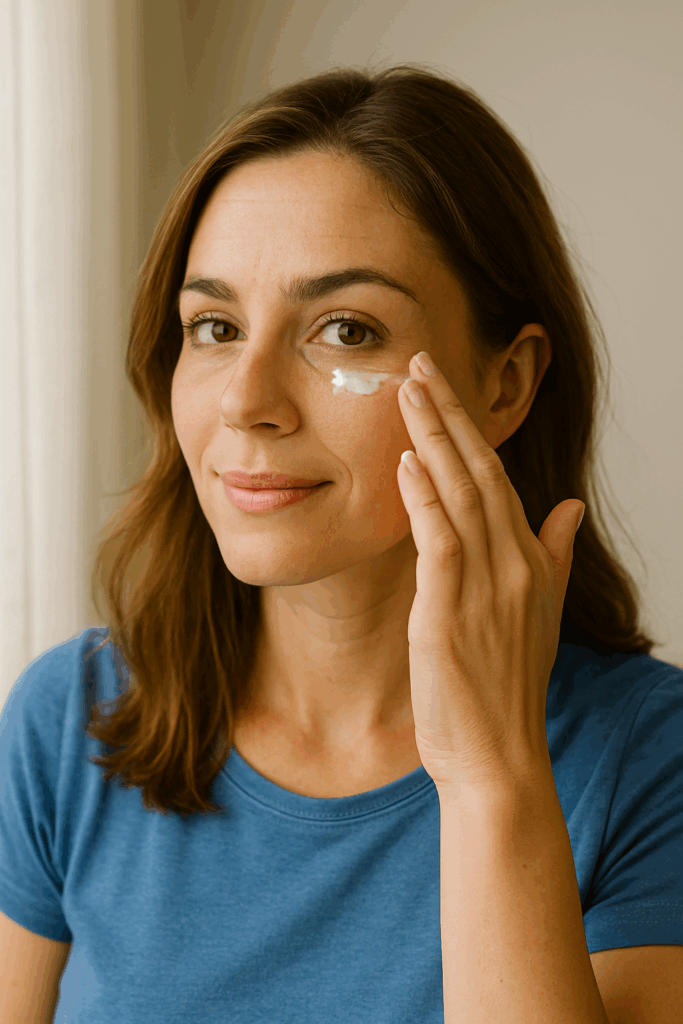Curious about a “non surgical blepharoplasty”? While true blepharoplasty is a surgical procedure, there are effective non‑surgical eyelid rejuvenation options that smooth fine lines, soften shadows, and refine texture—often with little to no downtime. At Dr. Richard Peck’s Northern New Jersey practice, we’ll help you decide whether non‑surgical treatments or eyelid surgery (or a combination) is the best path to a naturally refreshed look.
What a “Non‑Surgical Bleph” Really Means
Non‑surgical eyelid rejuvenation typically combines technologies and injectables to target specific concerns:
- Laser resurfacing (ablative or fractional) for crepey skin and fine lines around the lids
- Energy‑based skin tightening (radiofrequency or ultrasound) to stimulate collagen and modestly tighten mild laxity
- Neuromodulators to soften crow’s feet and lateral smile lines
- Hyaluronic acid filler for carefully selected tear‑trough hollowing (when anatomy is appropriate)
- Medical‑grade skincare (retinoids, peptides, sunscreen) to maintain and enhance results
Translation: We choose the least invasive tools that match your anatomy and goals—no one‑size‑fits‑all plans.

Who Benefits Most from Non‑Surgical Options?
- Fine lines and crepey texture more than excess skin
- Mild under‑eye hollowing without significant fat bags
- Early laxity and patients not ready for surgery
- Those seeking subtle improvements with minimal downtime
If you have pronounced under‑eye bags, hooded upper lids, or significant skin excess, surgery typically provides more reliable, longer‑lasting results.
Treatment Menu: How We Target Common Concerns
Crepey Skin & Fine Lines
- Best for: early texture changes
- Options: fractional or ablative laser resurfacing; sometimes paired with neuromodulators
- Downtime: pinkness or light flaking a few days to a week (varies by intensity)
Tear‑Trough Shadows
- Best for: mild hollowing without large fat bags or loose skin
- Options: HA filler using a conservative, anatomy‑guided approach
- Longevity: variable (often many months); periodic touch‑ups maintain results
Mild Laxity / Subtle Lift
- Best for: early laxity and soft tissue support
- Options: radiofrequency or ultrasound tightening around brow and lower lids
- Expectations: gradual collagen remodeling—think refinement, not dramatic lift
Crow’s Feet
- Best for: lines driven by muscle activity
- Options: neuromodulators for smoother skin at rest and with expression
“Laser Eye Lift” vs. Eyelid Surgery
A so‑called laser eye lift usually means laser resurfacing around the eyelids—not removal of bags or excess skin. Lasers improve texture and fine lines; they don’t reposition fat pads or remove extra skin. When bags or hooding are the main issue, blepharoplasty is the definitive option.
Safety First, Always
The eye area is delicate. Dr. Peck uses conservative settings and techniques, protects the ocular surface when needed, and spaces treatments appropriately. With fillers, we prioritize correct patient selection and precise placement to avoid swelling or a puffy look.
What to Expect: Comfort, Downtime, and Maintenance
- Comfort: most non‑surgical treatments use topical numbing; energy devices can feel warm or tingly
- Downtime: usually minimal; laser intensity determines recovery (from social‑ready in a few days to ~1 week)
- Results: gradual and cumulative—best seen over weeks as collagen remodels
- Maintenance: periodic touch‑ups (e.g., neuromodulators every few months; energy/laser sessions as advised)

When Surgery Is the Better Choice
- Moderate to severe upper‑lid hooding that hides the crease
- Distinct under‑eye bags from fat prolapse
- Significant skin excess or laxity
Surgery can be combined with laser resurfacing for comprehensive rejuvenation when appropriate.
Dr. Peck’s Approach
We start with a clear diagnosis—skin, fat, muscle, and support structures—to map the least invasive plan that will still achieve your goals. If non‑surgical options can deliver, we’ll recommend them. If surgery is the smarter choice, we’ll explain why and outline a conservative, natural plan.
Frequently Asked Questions
Is there such a thing as non‑surgical blepharoplasty?
The term is commonly used online, but true blepharoplasty is surgical. Non‑surgical options can meaningfully improve texture, fine lines, and mild hollowing.
Can laser resurfacing remove under‑eye bags?
Lasers refine skin and soften lines; they don’t remove or reposition fat pads. Pronounced bags respond best to lower blepharoplasty.
Is filler safe under the eyes?
When used selectively and placed precisely in the right candidate, HA filler can soften hollows. It’s not ideal for patients with prominent bags or very lax skin.
How long do non‑surgical results last?
Neuromodulators last a few months; fillers can last many months; collagen‑stimulating treatments build gradually and are maintained with periodic sessions.
What’s the downtime compared to surgery?
Usually minimal (days) versus surgery (about 1–2 weeks for most social activities), depending on treatment intensity and your healing response.

Ready to map your best next step?
Book a consultation in West Orange or Cedar Knolls to compare non‑surgical options with blepharoplasty and design a plan that looks like you, only fresher.
Explore the series:
• Blepharoplasty Guide: Upper vs. Lower, Candidacy & Recovery
• Upper Blepharoplasty: From Hooded Lids to a Natural Crease
• Lower Blepharoplasty for Under‑Eye Bags: Techniques & Recovery
Educational content only; not medical advice. Please book a consultation for personalized recommendations.